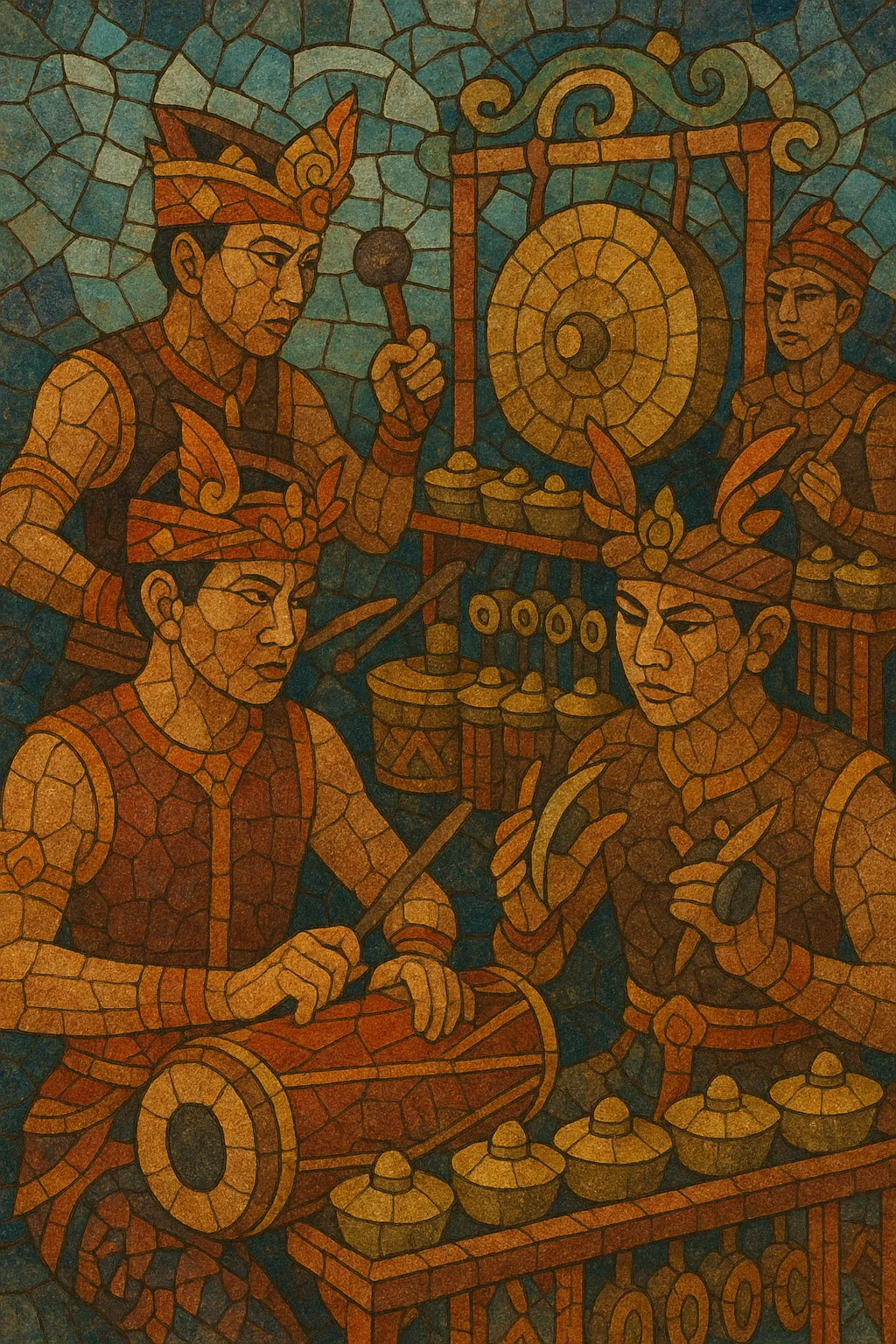Gamelan beleganjur is a high-energy, processional style of Balinese gamelan performed by portable ensembles that march through streets and temple courtyards.
Its hallmark sound layers interlocking cymbals (ceng-ceng), driving twin drums (kendang), and a portable array of gongs and small kettle gongs (including reyong), all tuned in paired, beating octaves to create the characteristically shimmering Balinese ombak (wave).
Traditionally associated with ritual warfare and funerary processions (ngaben), beleganjur functions as sonic protection and communal accompaniment. In the late 20th century, it evolved into a virtuosic contest form (kreasi beleganjur), adding choreographed formations, dramatic breaks (angsel), and modern arrangement techniques while retaining its ritual roots.
Beleganjur literally means "row of warriors," reflecting its early use as a martial and processional ensemble in pre-colonial Bali. By the 1700s, portable gong ensembles were accompanying troops, royal processions, and village rituals. Their loud, penetrating timbres and cyclic drumming patterns served protective and galvanizing roles, believed to repel malevolent forces and energize participants.
Over time, beleganjur became integral to religious life—especially in cremation (ngaben) and temple festival (odalan) processions—where its pulsing cycles mark communal movement and lend spiritual potency. The ensemble’s colotomic gong cycles and interlocking (kotekan) textures align with broader Balinese musical aesthetics while being adapted for mobility and outdoor resonance.
In the mid- to late 20th century—alongside the rise of gong kebyar aesthetics—beleganjur absorbed new dynamic contrasts, faster tempi, and more intricate interlockings. This culminated in the emergence of kreasi beleganjur (creative/modern beleganjur) during the 1980s, propelled by competitions at the Bali Arts Festival. Composers and community ensembles began crafting staged processional works with sectional form (kawitan–pengawak–pengecet), choreographed drill-like movement, and dramatic cue-based breaks (angsel).
University conservatories (notably ISI Denpasar) and community youth groups (sekaa beleganjur) innovated repertoire and pedagogy, while international ensembles helped globalize the style. Today beleganjur sounds in ritual, competition, and concert settings, balancing sacred function with contemporary creativity and performance spectacle.


